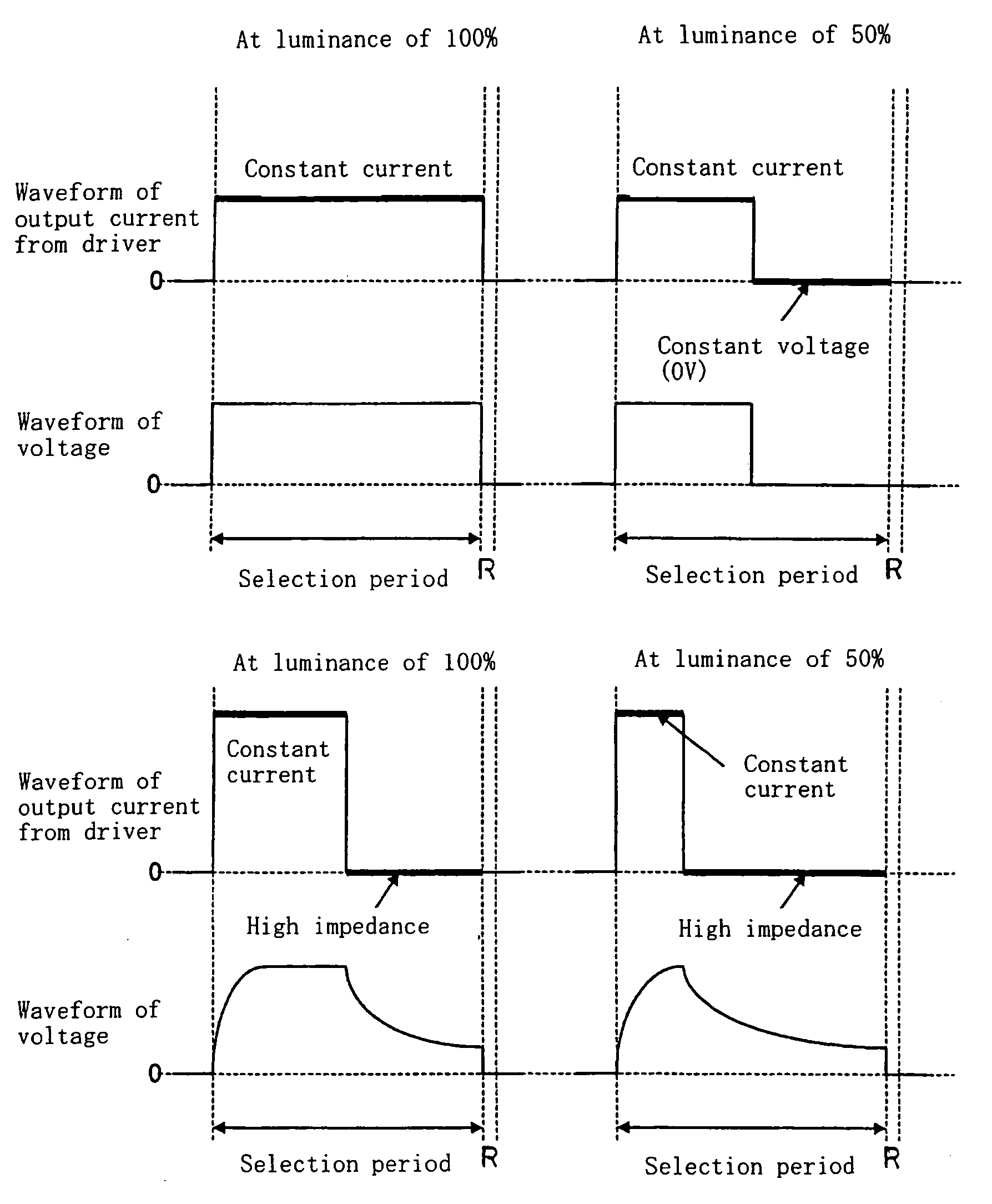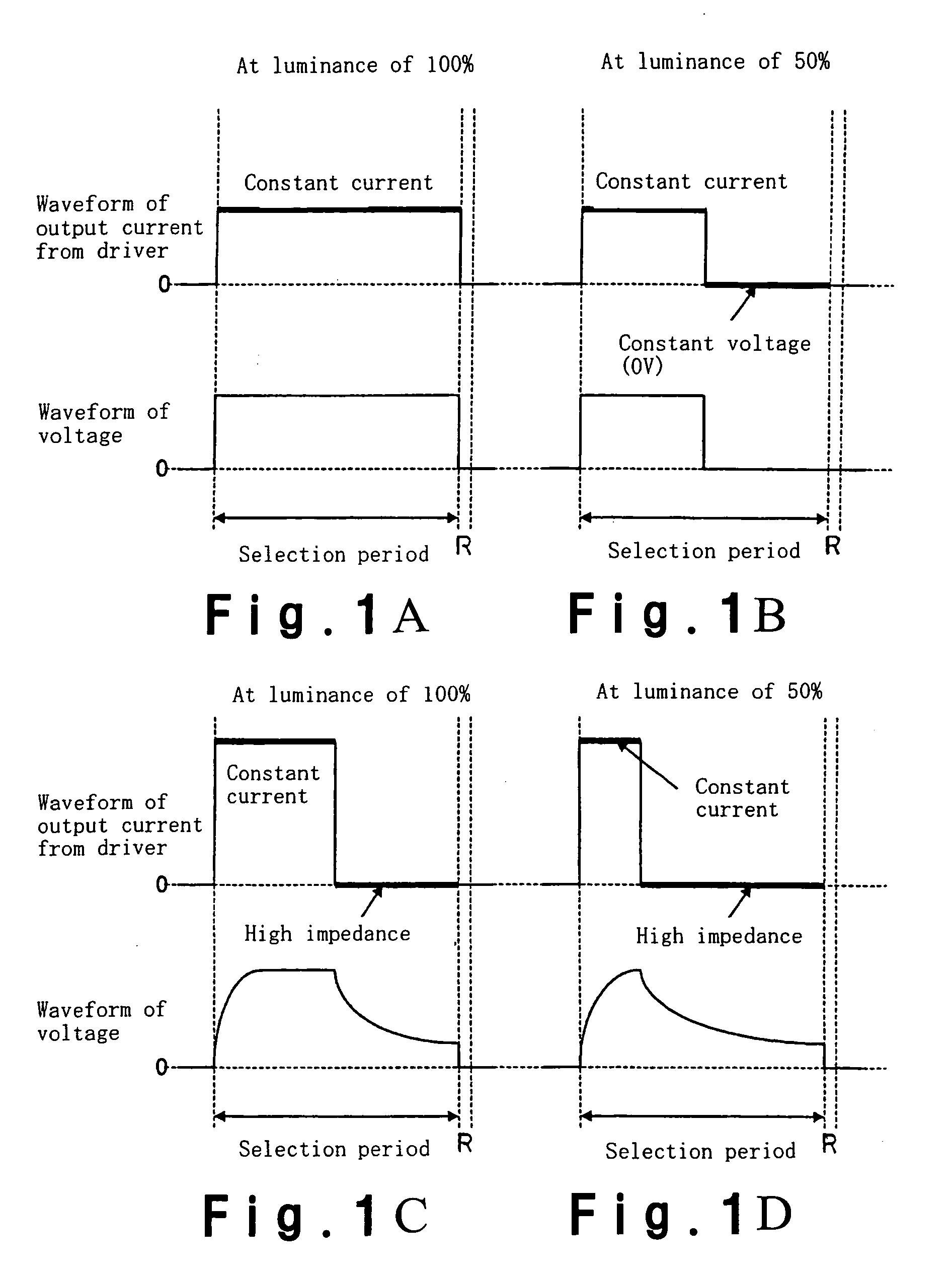Method for driving an organic electroluminescent display device
a display device and electroluminescent technology, applied in the direction of electroluminescent light sources, static indicating devices, instruments, etc., can solve the problems of increasing luminance, lowering luminance, and small width of variations in luminance of organic electroluminescent elements with respect to current values, so as to reduce power consumption and suppress horizontal cross-talk or chrominance non-uniformity.
- Summary
- Abstract
- Description
- Claims
- Application Information
AI Technical Summary
Benefits of technology
Problems solved by technology
Method used
Image
Examples
example 1
[0078]An organic electroluminescent element for passive matrix addressing was provided on a glass substrate. Specifically, an ITO film was deposited on the glass substrate so as to have a film thickness of 200 nm, and the deposited film was etched to form anode strips 2. A film of chrome (Cr) and a film of aluminum (Al) were deposited so as to have a layered structure having a film thickness of 300 nm, and the deposited layered structure was etched to form wiring in the organic electroluminescent element. On the etched structure, photosensitive polyimide was applied as an insulating film, and the applied film was exposed and developed to form openings working as light emitting portions of respective pixels. On the structure thus layered, a thin film was deposited to form a hole injection layer as an organic electroluminescent layer by a wet application method using an organic solvent containing PTPDEK as an organic polymeric material, PTPDEK is manufactured by Chemipro Kasei Kaisha,...
example 2
[0084]The organic electroluminescent element used in Example 1 was also used and energized at a frame frequency of 86 Hz and with a duty of 1 / 64 by the s electric charge control driving. The number of the gray scale levels was set at 16 (including a black level). As shown in Table 1, the driving current was 1.2 mA per one column. The current application section at the maximum gray scale level as the constant current section at the time of maximum luminance was set to have a length of 127 s. The current application section at the minimum gray scale except the black level was set to have a length of 5.8 μs. The impedance time at the maximum gray scale level was set at 49 μs, i.e., 70% of the selection time. The added pulse width was set at 5.4 μs.
[0085]The electric charge driving was performed by the conditions stated above. It was revealed that chrominance non-uniformity was not visually recognized and that no cross-talk was caused.
PUM
 Login to View More
Login to View More Abstract
Description
Claims
Application Information
 Login to View More
Login to View More - R&D
- Intellectual Property
- Life Sciences
- Materials
- Tech Scout
- Unparalleled Data Quality
- Higher Quality Content
- 60% Fewer Hallucinations
Browse by: Latest US Patents, China's latest patents, Technical Efficacy Thesaurus, Application Domain, Technology Topic, Popular Technical Reports.
© 2025 PatSnap. All rights reserved.Legal|Privacy policy|Modern Slavery Act Transparency Statement|Sitemap|About US| Contact US: help@patsnap.com



